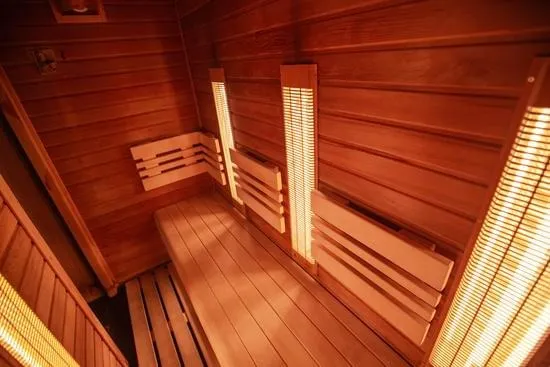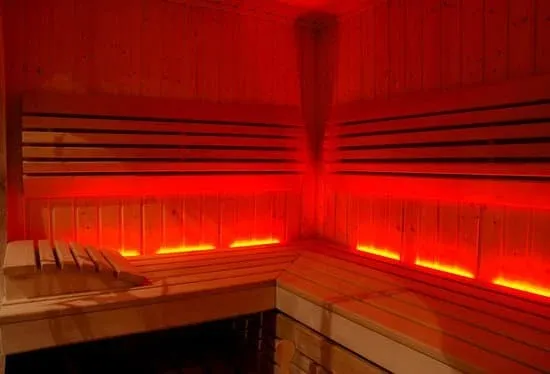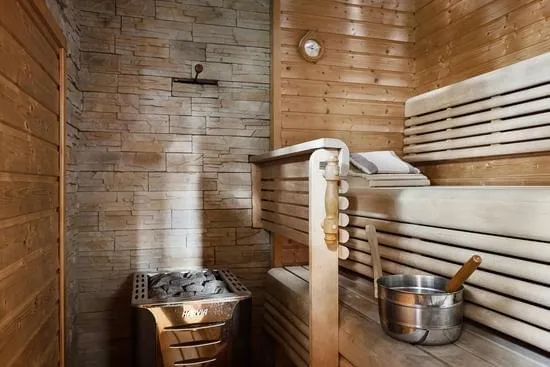Traditional vs. Infrared Indoor Saunas: Complete Comparison

One of the most common questions I hear is: "Should I get a traditional or infrared sauna?" After helping hundreds of people make this decision, I can tell you there's no universally correct answer—but there is a right answer for you.
Both sauna types offer profound health benefits, but they deliver them in different ways. Understanding these differences will help you choose the option that best fits your wellness goals, preferences, and practical constraints. Let's dive deep into this comparison.
Understanding the Fundamental Difference
The core distinction between these sauna types lies in how they generate and deliver heat to your body.
Traditional Saunas: Heating the Air
Traditional saunas, originating in Finland over 2,000 years ago, heat the air around you using a heater (electric, wood-burning, or gas) topped with rocks. When water is poured on the hot rocks—called löyly in Finnish—it creates steam bursts that intensify the heat sensation. The heated air then warms your body from the outside in. Typical temperatures range from 150-195°F with 5-30% humidity (higher with steam).
According to the National Institutes of Health, traditional sauna bathing has been practiced for thousands of years and offers significant cardiovascular and wellness benefits.
Infrared Saunas: Heating Your Body Directly
Infrared saunas use infrared heaters that emit light waves (invisible to the naked eye) that penetrate your skin and heat your body directly without significantly warming the air. This creates a gentler heat experience at lower ambient temperatures. Typical temperatures are 120-140°F with minimal humidity. For more details, check our complete infrared sauna guide.

Detailed Comparison
Temperature and Heat Experience
Traditional Saunas: Higher air temperature (150-195°F) creates intense ambient heat. The heat feels more aggressive and enveloping. Adding water to rocks creates humidity bursts. Heat-up time is 30-45 minutes. Session duration typically 10-20 minutes due to intensity.
Infrared Saunas: Lower air temperature (120-140°F) but effective body heating. Heat feels gentler, more tolerable for longer periods. Dry heat throughout (no humidity option). Heat-up time is faster at 15-20 minutes. Session duration can extend to 30-45 minutes comfortably.
"The heat in a traditional sauna feels like being wrapped in a hot blanket, while infrared feels like warm sunshine on your skin—both therapeutic but distinctly different experiences."
Health Benefits Comparison
| Benefit | Traditional Sauna | Infrared Sauna |
|---|---|---|
| Cardiovascular Health | Excellent | Excellent |
| Detoxification | Very Good | Excellent (deeper penetration) |
| Muscle Recovery | Good | Excellent (deeper tissue heating) |
| Stress Relief | Excellent | Excellent |
| Respiratory Benefits | Excellent (with steam) | Good |
| Skin Health | Excellent | Excellent |
| Calorie Burning | 300-600 per session | 200-600 per session |
Both types offer similar overall benefits. The Mayo Clinic recognizes both traditional and infrared saunas as beneficial for cardiovascular health and overall wellness. For detailed health benefits, explore our articles on stress relief, muscle recovery for athletes, and skin health benefits.
Installation and Setup
Traditional Saunas: More complex installation with higher electrical requirements (typically 240V, 30-60 amps). More extensive ventilation needed due to higher heat and potential moisture. Requires proper insulation and vapor barriers. More permanent installation typically. Professional installation strongly recommended.
Infrared Saunas: Simpler installation with smaller models using standard 120V outlets. Larger models need 240V but lower amperage. Less extensive ventilation required. More portable/relocatable options available. Some models suitable for DIY assembly.
Operating Costs
Traditional Saunas: Higher energy consumption due to heating the entire air space. Longer heat-up time wastes energy. Typical cost $20-40/month with regular use. Wood-burning options variable by fuel costs.
Infrared Saunas: Very energy-efficient technology. Faster heat-up saves energy. Typical cost $10-20/month with regular use. Generally 40-50% more efficient than traditional.
Maintenance Requirements
Traditional Saunas: Requires regular cleaning of rocks and heater. More moisture means more potential wood maintenance. Needs monitoring of humidity and ventilation. Periodic deep cleaning of all surfaces. Wood may need re-sealing over time.
Infrared Saunas: Minimal maintenance requirements. Dry environment reduces wear. Simple wipe-down after use sufficient. Occasional vacuuming. Less intensive long-term care needs.
Cost Comparison
| Item | Traditional Sauna | Infrared Sauna |
|---|---|---|
| Purchase Price | $3,000-$10,000+ | $1,500-$6,000 |
| Installation | $1,000-$3,000 | $200-$1,000 |
| Operating Costs/Month | $20-$40 | $10-$20 |
| Maintenance/Year | $100-$300 | $50-$150 |
User Experience Differences
The Traditional Sauna Experience
Authentic Finnish tradition and ritual. Intense heat creates a powerful "taking a beating" sensation. The ability to create steam adds variety and intensity. Social bathing culture (more common in traditional). Cooling plunges or cold showers between rounds. Strong sense of accomplishment and invigoration. Appeals to heat enthusiasts and traditionalists.
The Infrared Sauna Experience
Modern, gentler approach to sauna therapy. Comfortable enough to read, meditate, or use devices. Gradual warming feels soothing rather than intense. Longer sessions feel manageable. Typically more private/individual use. Subtle but effective therapeutic feeling. Appeals to those seeking gentle wellness routines.
Which Should You Choose?
Choose Traditional Saunas If You:
- Love high heat and intense experiences
- Want the authentic Finnish sauna tradition
- Enjoy the ritual of adding water to hot rocks
- Plan to use it socially with family or friends
- Have experience with saunas and know you prefer traditional
- Have the budget for higher installation and operating costs
- Own your home and want a permanent installation
- Want respiratory benefits from steam
Choose Infrared Saunas If You:
- Are sensitive to high heat or new to saunas
- Want lower operating and installation costs
- Prefer a gentler wellness experience
- Need something more portable or apartment-friendly (see our small space guide)
- Want faster heat-up times for convenience
- Focus on muscle recovery and deep tissue benefits
- Prefer longer, more comfortable sessions
- Want lower maintenance requirements
Can You Have Both?
Some wellness enthusiasts choose to have access to both types, either through home installation of one type and gym/spa membership for the other, or dual-purpose units (rare and expensive), or starting with one and adding the other later.
If you're building a dedicated wellness space and budget allows, having both provides maximum flexibility. However, for most people, choosing one type that aligns with their preferences works perfectly well.
Safety Considerations
Both types are safe when used properly, but each has specific considerations. Always consult your doctor before starting sauna therapy, especially if you have cardiovascular conditions, are pregnant, take certain medications, or have temperature sensitivity issues. For detailed safety guidance, see our beginner's safety guide.
Traditional Sauna Cautions: Higher temperature increases risk of overheating. More potential for burns from hot rocks or heater. Steam can be problematic for some respiratory conditions. Requires more caution with electrical safety due to moisture.
Infrared Sauna Cautions: Generally considered lower risk due to lower temperatures. Still important to stay hydrated and listen to your body. Some medications increase photosensitivity. Follow manufacturer guidelines for session length.
The Verdict: Personal Preference Wins
After years of experience, I've concluded that both traditional and infrared saunas offer excellent health benefits. The "better" choice depends entirely on your individual circumstances including personal heat tolerance, budget constraints, available space, installation capabilities, wellness goals, lifestyle preferences, and maintenance willingness.
If possible, try both types before deciding. Many gyms and spas offer both—experience them firsthand to see which resonates with you. Your body and preferences will guide you to the right choice.
For more guidance on making your decision, explore our comprehensive buying guide.
Making Your Choice
Still undecided? Here's my recommendation: If budget is a concern, start with infrared—it's more forgiving and versatile. If you're a heat enthusiast with experience, traditional saunas deliver that intense experience you crave. If you're new to saunas, infrared provides a gentler introduction. If you want authenticity and tradition, traditional saunas can't be beaten.
Remember, the best sauna is the one you'll use consistently. Choose the type that excites you, fits your budget, and aligns with your lifestyle. Both paths lead to better health—just through different routes.
Ready to take the next step? Contact us for personalized recommendations based on your specific needs and preferences.
Need Help Deciding?
Let our experts guide you to the perfect sauna type for your lifestyle and wellness goals.
Frequently Asked Questions
Neither is universally better—it depends on your preferences. Infrared saunas are better for heat-sensitive individuals and lower operating costs. Traditional saunas provide authentic Finnish experience and higher temperatures.
Both provide cardiovascular benefits, stress relief, and detoxification. Infrared offers deeper tissue penetration for muscle recovery, while traditional provides more intense sweating and respiratory benefits.
Infrared saunas are more energy-efficient, costing $10-20 per month versus $20-40 for traditional electric saunas.
References
- National Institutes of Health. "Sauna Bathing and Cardiovascular Health"
- Mayo Clinic. "Sauna Health Benefits and Safety"




